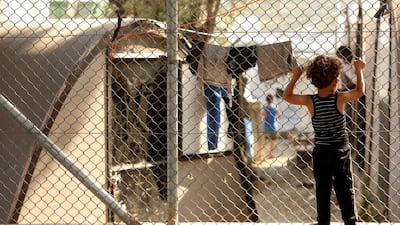At the age of 10, the most pressing issue for a child should be adding to their sticker or toy collection. In the interminable hell that is Moria, it is whether to live or die.
Medecins Sans Frontieres workers in the refugee camp on the Greek island of Lesbos say they are frequently seeing children as young as 10 who have attempted suicide.
Unable to face the horrors of appalling living conditions, outbreaks of violence and disease, many of the camp’s youngest inhabitants have attempted to take their own lives.
On an island which has been turned into a holding pen for refugees trapped in neverending limbo, it is just one bleak and heartwrenching aspect of the desperate cases charity workers and NGOs face on a daily basis.
Moria was designated to hold 3,100 people; there are now more than 8,000 crammed into the camp and for the first time, the number of refugees on Lesbos has topped 10,000.
The camp opened in 2015 as a transit base to process refugees within days. Instead, some have been languishing there for years, trapped in a no man’s land after the EU struck a deal with Turkey in 2016 to return thousands of refugees.
Yet despite more than 71,000 people arriving in Greece by sea since then, less than 2,300 have been sent back to Turkey.
Violence is so rife in the confined quarters that several charities, including MSF, initially pulled out.
With more new arrivals every day from Syria, Afghanistan, Sudan and the Congo, sectarian divisions are rife; one worker even compared clashes to the Syrian war enacted within the camp’s barbed wire surrounds.
Women fearing sexual assaults endure the humiliation of wearing nappies rather than risking going to the toilet at night; in some makeshift tents, hastily erected because there is no more accommodation, up to four families are living in cramped and filthy conditions.
But it is on children that the most damaging impact has been witnessed. Having escaped conflict in their home countries and endured a perilous journey to get there, the daily horrors they have seen in Moria are leaving them permanently traumatised.
As psychiatrist Alessandro Barberio says in the MSF report: “In the past four weeks, we have received an increase in the number of minors suffering from intense panic attacks, suicide ideations and suicide attempts.”
The Greek government carries some responsibility for enforcing the EU’s containment policy but the responsibility does not lie with Greece alone. Children must be prioritised and treated with compassion and humanity for the horrors they have survived – traumas no child should ever witness.
Even if they are given a reprieve and transferred to the mainland, the psychological scars they carry will remain with them for years.
Three years on from the camp’s opening, their need for a safe haven is more acute than ever. The world cannot continue to look the other way while children are driven to take their own lives.

